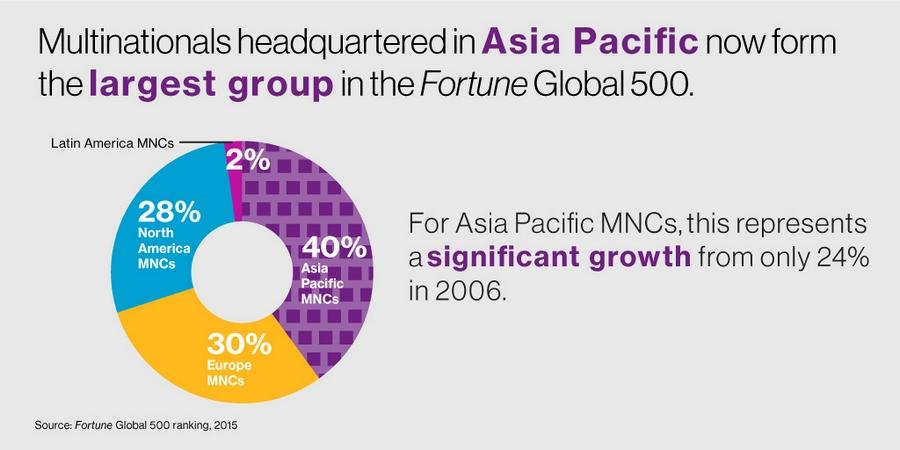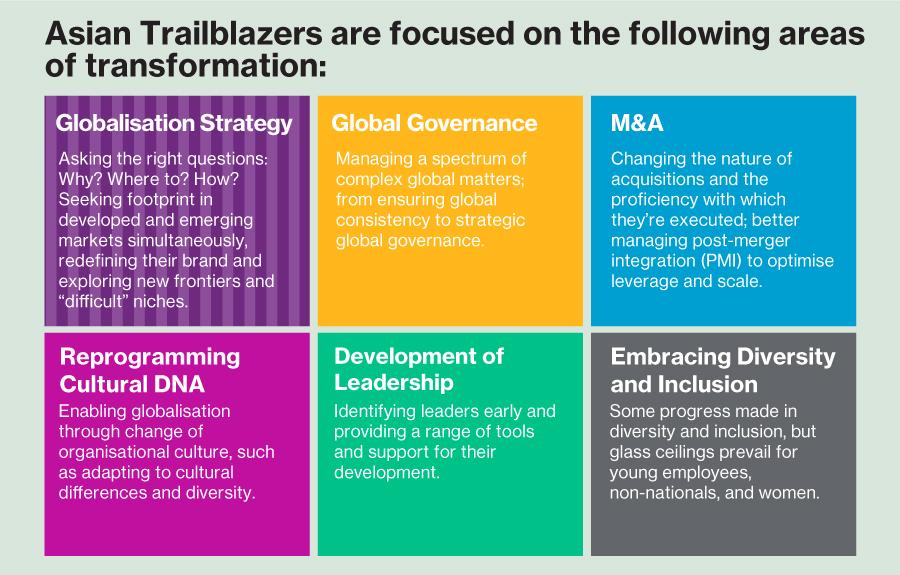Masters of multitasking and transformation
The 2016 Asian Trailblazers Study provides insight on 80 of the region’s largest multinationals, on the business issues they face with respect to their globalisation strategy.
In 2012, for the first time, the percentage of Asia Pacific-headquartered companies in the Fortune Global 500 outnumbered those headquartered in Europe and North America. In 2015, Asia Pacific headquartered companies accounted for 40% of the Fortune Global 500, while Europe- and North America-headquartered firms account for only 30% and 28% respectively.

Asian multinationals — or “Trailblazers” as we have coined them — differ from their global counterparts in the manner of their growth. Whereas multinationals from Western regions have been, by and large, able to develop in a linear, methodical manner, Asian Trailblazers have had to take a much more unorthodox route. They operate in a complex and fast-paced world, and one with increasingly blurred geographic boundaries. Nonetheless, their success has been meteoric. How have they been able to succeed so well?
In many ways, the unorthodox nature of their growth has helped as it has compelled them to become flexible and pragmatic; they are able to juggle basic day-to-day tasks along with sophisticated issues of global governance and oversight. Their HR teams in particular have been lean, and often do not have a seat at the C-suite table. However, through our research we learned that Asian Trailblazers have been able to make up for lost time by prioritising what they need to know and do, selectively outsourcing when they don’t have the experience or data, and by learning quickly on the job.
Given limited resources, HR and other corporate functions have had to become “Masters of Multitasking”.
The 2016 Asian Trailblazers Study provides insight on 80 of the region’s largest multinationals, on the business issues they face with respect to their globalisation strategy. The report concentrates on six key areas:

The study, which is based on both quantitative as well as qualitative data (including interviews, anecdotes and case studies covering some of the region’s leading companies), covers 11 countries in Asia Pacific, including Australia, China, Hong Kong, India, Japan, Malaysia, the Philippines, Singapore, South Korea, Taiwan and Thailand.
| Title | File Type | File Size |
|---|---|---|
| 2016 Asian Trailblazers Study: Masters of Multitasking and Transformation | 1.6 MB |